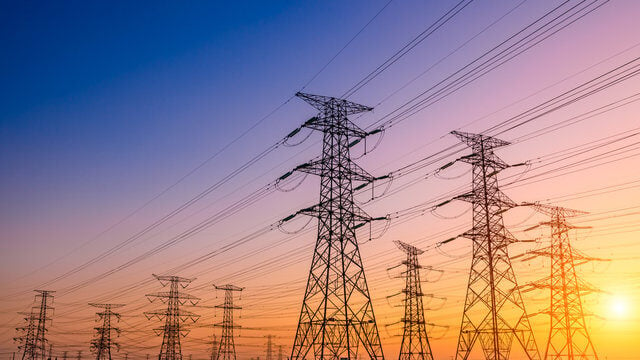Maintaining Your Electricity Grid: Safety and Profitability Hand-in-Hand
Mar 7, 2025 12:09:19 PM TMA - The Hazardous Goods Companion 5 min read

Let's face it, when you think about electricity grids, you probably imagine towering power lines or the hum of a substation, right? But beyond the visible hardware, there's a constant, crucial effort to keep them running smoothly: maintenance. And it's not just about keeping the lights on; it's a smart financial move that pays dividends.
The Foundation: Why Grid Maintenance Matters
First off, let's talk safety. You wouldn't drive a car with faulty brakes, would you? The same principle applies to our electricity grids.
Ensuring Public Safety: A First Priority
A well-maintained grid minimizes the risk of accidents.
Think about fallen power lines during storms. These pose serious hazards.
Regular inspections and repairs prevent such incidents, protecting both the public and workers.
According to the National Electrical Safety Code, proactive maintenance reduces electrical accidents by up to 30% (NESC data). It's not just about wires; it's about lives.
Preventing Outages: The Cost of Inaction
Picture this: your entire neighborhood without power during a heatwave. Or a business losing thousands of dollars due to a sudden outage. These scenarios highlight the crippling effect of neglected grids.
The US Department of Energy estimates that power outages cost the U.S. economy billions of dollars annually.
Proper maintenance prevents these disruptions, ensuring a stable power supply for homes and businesses.
The Profit Side: How Maintenance Boosts the Bottom Line
Now, let's get to the good stuff: the money. Yes, maintaining your grid is profitable.
Reducing Energy Losses: Efficiency Gains
Did you know that a poorly maintained grid wastes energy?
Leaky transformers and corroded lines lead to significant energy losses.
By fixing these issues, utilities can save a substantial amount of energy, reducing operational costs. For example, replacing outdated transformers can improve efficiency by 2-3%, which translates to millions in savings for larger grids.
Extending Asset Lifespan: Long-Term Savings
If we think of your grid as a car, regular oil changes and tune-ups keep it running longer. Similarly, consistent maintenance extends the lifespan of grid assets. Replacing a transformer costs a fortune, but regular upkeep can delay this expense by years, if not decades.
Attracting Investment: A Reliable Grid's Appeal
Investors love stability. A reliable electricity grid is a major selling point for businesses looking to set up shop. A well-maintained grid signals efficiency and dependability, attracting investment and fostering economic growth.
The Power of Integrated Technology: Predictive Maintenance and Asset Intelligence
Modern electricity grid maintenance thrives on the synergy of advanced technologies. Think of it as giving your grid a super-powered nervous system. We're talking about the combined might of:
- Predictive Analytics: This is your grid's crystal ball. By crunching vast amounts of data, it anticipates potential failures, allowing for proactive repairs. Imagine knowing exactly when a transformer is about to give out, before it actually does.
- Passive RFID: These tiny, battery-free tags are like digital breadcrumbs, tracking every asset's location and history. They provide a cost-effective way to manage inventory, schedule maintenance, and ensure nothing gets lost in the shuffle.
- Integrated Software Platforms: This is the control center, bringing all the data together in real-time. It allows for seamless monitoring, automated tasks, and enhanced communication between teams. It's like having a single dashboard that shows you everything that's happening across your entire grid.
This combination is a game-changer:
- Proactive Maintenance: Instead of reacting to outages, utilities can anticipate and prevent them.
- Enhanced Asset Management: Knowing exactly where every asset is and its condition improves efficiency and reduces costs.
- Data-Driven Decisions: Real-time data and predictive insights enable informed decision-making, optimizing resource allocation.
- Increased Grid Reliability: By preventing failures and optimizing maintenance, these technologies enhance the overall reliability of the electricity grid.
Companies like TMA, The Hazardous Goods Companion supports in such implementations, to ensure more efficient, profitable and secure grid management.
Case Studies: Real-World Examples of Success
Let's look at some real-world examples.
City-Wide Grid Upgrades: Documented Improvements
Cities that invest in grid modernization see significant improvements in reliability and efficiency. For example, Chicago's grid modernization project reduced outage durations by 20% (Chicago Infrastructure Trust).
Not only that, it also protects workers and ensures that maintenance tasks are performed safely and efficiently.
Many governments offer grants and incentives to support grid modernization. These resources can significantly reduce the financial burden on utilities.
Conclusion
Maintaining your electricity grid is a strategic investment that yields significant returns in safety, reliability, and profitability.
By embracing technologies like RFID, predictive analytics and software, utilities can transform their maintenance practices from reactive to proactive.
This shift not only minimizes costly outages and extends asset lifespan but also safeguards workers and communities.
In this evolving energy landscape, having a reliable partner is crucial. That's where TMA, The Hazardous Goods Companion, steps in. We specialize in providing comprehensive solutions that leverage passive RFID and advanced software, coupled with predictive analytics, tailored specifically for the energy industry.
We empower you to make informed decisions and proactively manage your grid. By partnering with TMA, you're investing in a safer, more reliable, and more profitable future for your energy infrastructure.
